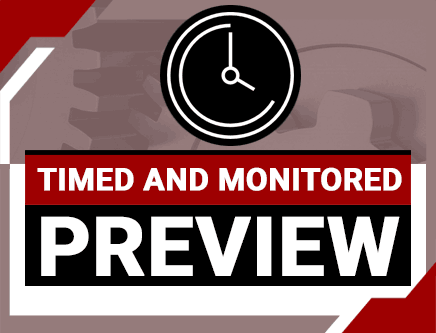Engineering Ethics: The Challenger Disaster and the Story of “The Five Lepers” (Ohio T&M)
Credit: 1 PDH
Subject Matter Expert: Edward P. Brunet, Jr., P.E.
In Engineering Ethics: The Challenger Disaster and the Story of “The Five Lepers” , you'll learn ...
- What caused the Challenger space shuttle to disintegrate shortly after launch in January, 1986
- Why the engineer in charge of the shuttle solid rocket booster project refused to sign off on the launch
- Warning signs from previous flights that went unheeded by senior management
- How the unrelenting pressure to meet the demands of an accelerated flight schedule impacted the launch decision
Overview

To meet the Ohio Board's intent that online courses be "paced" by the provider, a timer will be used to record your study time. You will be unable to access the quiz until the required study time of 50 minutes has been met.
Credit: 1 PDH
Length: 20 pages
The Space Shuttle Challenger disaster occurred on January 28, 1986, when Space Shuttle Challenger broke apart 73 seconds into its flight, leading to the deaths of its seven crew members.
The disaster resulted in a 32-month hiatus in the shuttle program and the formation of the Rogers Commission, a special commission appointed by U.S. President Ronald Reagan to investigate the accident.
The Rogers Commission found NASA's organizational culture and decision-making processes had been key contributing factors to the accident. NASA managers had known contractor Morton Thiokol's design of the SRBs contained a potentially catastrophic flaw in the O-rings since 1977, but failed to address it properly.
Allan McDonald, director of Morton Thiokol's shuttle solid rocket booster (SRB) project, was at Kennedy Space Center for the launch. He and other engineers worried that cold weather would compromise the O-rings.
In the end, MacDonald was so concerned about the potential for a catastrophic O-ring failure and the resulting loss of life that he refused to sign off on the launch. His boss, also an engineer, was concerned as well… but eventually gave his approval to proceed.
In this course, we’ll review the events surrounding the Challenger Disaster. We’ll also examine the ways in which some engineers adhered to their ethical responsibilities, as outlined in the NSPE Code of Ethics, while others compromised safety because of cost and schedule pressures.
Specific Knowledge or Skill Obtained
This course teaches the following specific knowledge and skills:
- What caused the worst accident in the history of the U.S. space program
- Why there was so much pressure to launch this particular mission on schedule
- NASA’s basis for selecting Morton Thiokol to build the solid rocket boosters (SRBs) for the space shuttle program
- Why the issue that doomed the Challenger was never fixed, even though tests and flights from 1977 onward showed evidence of the problem
- Why management did not heed a Thiokol engineer’s warning of the possibility of "catastrophe of the highest order- loss of human life."
- Why the decision to launch the Challenger in January, 1986 was flawed
- How weather directly contributed to the disaster
- What happened to the five engineers who made their concerns known to both their senior management and NASA
- The implications of the statement made by Thiokol's general manager to his fellow vice presidents: "It's time to take off your engineering hats and put on your management hats."
- How the principles of Engineering Ethics apply to this case
Certificate of Completion
You will be able to immediately print a certificate of completion after passing a multiple-choice quiz consisting of 10 questions. PDH credits are not awarded until the course is completed and quiz is passed.
| This course is applicable to professional engineers in: | ||
| Alabama (P.E.) | Alaska (P.E.) | Arkansas (P.E.) |
| Delaware (P.E.) | District of Columbia (P.E.) | Florida (P.E. Other Topics) |
| Georgia (P.E.) | Idaho (P.E.) | Illinois (P.E.) |
| Illinois (S.E.) | Indiana (P.E.) | Iowa (P.E.) |
| Kansas (P.E.) | Kentucky (P.E.) | Louisiana (P.E.) |
| Maine (P.E.) | Maryland (P.E.) | Michigan (P.E.) |
| Minnesota (P.E.) | Mississippi (P.E.) | Missouri (P.E.) |
| Montana (P.E.) | Nebraska (P.E.) | Nevada (P.E.) |
| New Hampshire (P.E.) | New Jersey (P.E.) | New Mexico (P.E.) |
| New York (P.E.) | North Carolina (P.E.) | North Dakota (P.E.) |
| Ohio (P.E. Timed & Monitored) | Oklahoma (P.E.) | Oregon (P.E.) |
| Pennsylvania (P.E.) | South Carolina (P.E.) | South Dakota (P.E.) |
| Tennessee (P.E.) | Texas (P.E.) | Utah (P.E.) |
| Vermont (P.E.) | Virginia (P.E.) | West Virginia (P.E.) |
| Wisconsin (P.E.) | Wyoming (P.E.) | |


 Live support chat
Live support chat



